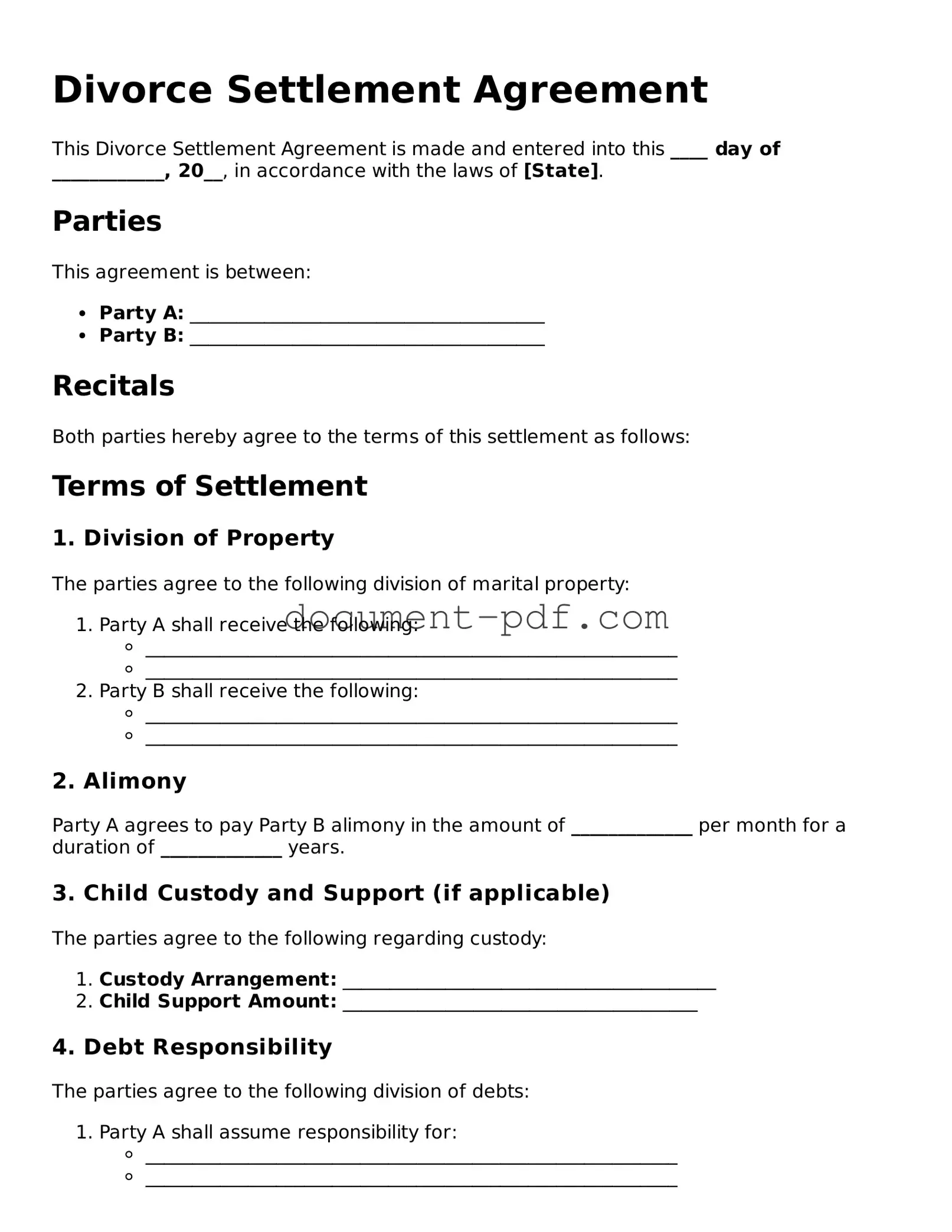Divorce Settlement Agreement
This Divorce Settlement Agreement is made and entered into this ____ day of ____________, 20__, in accordance with the laws of [State].
Parties
This agreement is between:
- Party A: ______________________________________
- Party B: ______________________________________
Recitals
Both parties hereby agree to the terms of this settlement as follows:
Terms of Settlement
1. Division of Property
The parties agree to the following division of marital property:
- Party A shall receive the following:
- _________________________________________________________
- _________________________________________________________
- Party B shall receive the following:
- _________________________________________________________
- _________________________________________________________
2. Alimony
Party A agrees to pay Party B alimony in the amount of _____________ per month for a duration of _____________ years.
3. Child Custody and Support (if applicable)
The parties agree to the following regarding custody:
- Custody Arrangement: ________________________________________
- Child Support Amount: ______________________________________
4. Debt Responsibility
The parties agree to the following division of debts:
- Party A shall assume responsibility for:
- _________________________________________________________
- _________________________________________________________
- Party B shall assume responsibility for:
- _________________________________________________________
- _________________________________________________________
5. Miscellaneous Provisions
This Agreement represents the entire agreement between the parties. Any amendments must be in writing and signed by both parties.
Both parties acknowledge that they have consulted legal counsel and understand the terms of this settlement.
Signatures
Party A: _________________________________ Date: _______________
Party B: _________________________________ Date: _______________
